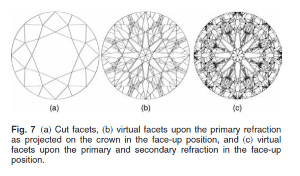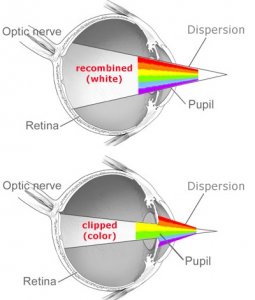diamondgezer
Rough_Rock
- Joined
- Apr 16, 2014
- Messages
- 54
My wife has a pair of earrings set with f color rb diamonds and a pendant set with g color rb diamonds. Both are set in 18k white gold.
The g color (ideal cut) stones appear 'darker' to us (or maybe better to say not as white, but not really more tinted) than the f color (vg cut) in most lighting conditions. This has intrigued us for some time. We bought both pieces of jewelry (and diamonds) from (different) online vendors. I have read many comments that the difference between f and g is not discernible to the untrained eye when face up, let alone when set.
This is not about the performance of the stones - although we're happy with the earrings. we're ecstatic with the pendant.
My wife will be having a BIG birthday in a year or so and I would like to buy her a solitaire. I was thinking of dropping color to an h to maximize size for budget.
My concern is that what we're seeing with the g stones is in fact the difference between f and g color, in which case dropping to an h is likely a no no!!
I know the easiest way to check is to go and see some f/g/h diamonds in person, but that would alert her to my plans.
So I'm looking for opinions as to what, if anything else could be causing this affect.
1) Do ideal cut stones by character appear darker than vg? (more contrast??)
2) Could the natural tone of the diamond material cause this. (Coincidence as all 3 stones are darker)
3) Could it be the settings which to my uneducated eyes look the same, 4 prong settings for both pieces, exposed sides, and an opening in the setting at the base of each stone??
4) Is it related to size of stones
5) Any other possible cause
Some details - the 6 f color earring stones are GIA certed F/SI1 with a mix of 1 good/ 4 very good and 1 excellent cut each weighing between 0.26 and 0.29 ct
the 3 G color pendant stones are GIA/AGS certed G/SI1 all triple X, 2 (H &A) weigh 0.32 ct each and the centre weighs 0.8 ct
If the opinion is that what we're seeing is NOT the color difference between f and g then are we safe going to h? ( and are we then risking seeing color difference between f and h?)
If anyone can shed light (no pun intended!!) on the above I'd be really grateful.
The g color (ideal cut) stones appear 'darker' to us (or maybe better to say not as white, but not really more tinted) than the f color (vg cut) in most lighting conditions. This has intrigued us for some time. We bought both pieces of jewelry (and diamonds) from (different) online vendors. I have read many comments that the difference between f and g is not discernible to the untrained eye when face up, let alone when set.
This is not about the performance of the stones - although we're happy with the earrings. we're ecstatic with the pendant.
My wife will be having a BIG birthday in a year or so and I would like to buy her a solitaire. I was thinking of dropping color to an h to maximize size for budget.
My concern is that what we're seeing with the g stones is in fact the difference between f and g color, in which case dropping to an h is likely a no no!!
I know the easiest way to check is to go and see some f/g/h diamonds in person, but that would alert her to my plans.
So I'm looking for opinions as to what, if anything else could be causing this affect.
1) Do ideal cut stones by character appear darker than vg? (more contrast??)
2) Could the natural tone of the diamond material cause this. (Coincidence as all 3 stones are darker)
3) Could it be the settings which to my uneducated eyes look the same, 4 prong settings for both pieces, exposed sides, and an opening in the setting at the base of each stone??
4) Is it related to size of stones
5) Any other possible cause
Some details - the 6 f color earring stones are GIA certed F/SI1 with a mix of 1 good/ 4 very good and 1 excellent cut each weighing between 0.26 and 0.29 ct
the 3 G color pendant stones are GIA/AGS certed G/SI1 all triple X, 2 (H &A) weigh 0.32 ct each and the centre weighs 0.8 ct
If the opinion is that what we're seeing is NOT the color difference between f and g then are we safe going to h? ( and are we then risking seeing color difference between f and h?)
If anyone can shed light (no pun intended!!) on the above I'd be really grateful.









300x240.png)